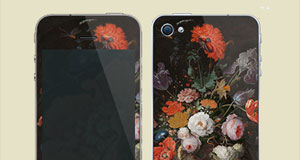Commissioned by the City of Amsterdam, c. 1650-53;{Vreeken cites an account book entry for a model of _het frontespies_ (the pediment) for 600 guilders, presumably dating from 1652 or 1653: Stadsarchief Amsterdam (hereafter: SAA), archive 5039 (Thesaurie Ordinaris), inv. no. 624, no. 11. By this time, the entire account had already been _tsedert lange in diverse partyen betaelt_ (since long in various instalments paid). Unclear is whether the entry concerns the east or west pediment. The latter was executed in marble in either 1656 or 1658. See H. Vreeken, ‘Quellinus’ boetseersels voor het zeventiende-eeuwse stadhuis op de Dam’, in M. Jonker et al., _In beeld gebracht: Beeldhouwkunst uit de collectie van het Amsterdams Historisch Museum_, coll. cat. Amsterdam 1995, pp. 38-59, esp. p. 45.} ? from the artist,{K. Fremantle, ‘The Fountains Designed for Van Campen’s Amsterdam Town Hall and Quellien’s Models for Them’, _Album discipulorum aangeboden aan J.G. van Gelder ter gelegenheid van zijn 60ste verjaardag_ (_Utrechtse Kunsthistorische Studiën_ 7), Utrecht 1963, pp. 101-18, esp. p. 104 (note 15): _dewijl zijn werk lootse nu affgebroken wordt dat haer Edele_ [burgemeesters] _sullen laten affhalen de modellen vande beelden die hij ten behoeve dezer Stede gemaeckt heeft_ (while his workshop is being closed, that her Noble [burgomasters] shall have the models of the sculptures that he made on behalf of this City collected). See also H.J. Wiggers, ‘De stad Amsterdam en haar vroegste beeldencollectie’, in M. Jonker et al., _In beeld gebracht: Beeldhouwkunst uit de collectie van het Amsterdams Historisch Museum_, coll. cat. Amsterdam 1995, pp. 60-75, esp. p. 62 (referring to A.W. Kroon, _Het Amsterdamsche stadhuis (thans Paleis), 1625-1700: Zijne geschiedenis naar onuitgegeven officiële bronnen bewerkt_, Amsterdam 1867, p. 138).} transferred to the Town Hall (now Royal Palace) at Dam Square, Amsterdam, 1664;{H.J. Wiggers, ‘De stad Amsterdam en haar vroegste beeldencollectie’, in M. Jonker et al., _In beeld gebracht: Beeldhouwkunst uit de collectie van het Amsterdams Historisch Museum_, coll. cat. Amsterdam 1995, pp. 60-75, esp. pp. 62-64. The models were initially kept in the Thesaurie Ordinaris (Treasury) of the town hall. Around 1700, most were moved to the art cabinet in the _kunstkamer_ (art chamber) on the third floor, see _Wegwyzer door Amsterdam_, Amsterdam (Nicolaas ten Hoorn) 1713, p. 446. From 1768 on, the task of overseeing the models’ preservation was assigned to the Stadstekenacademie (City Drawing Academy), also located in the aforementioned _kunstkamer_. In 1769, academy director Cornelis Ploos van Amstel compiled an inventory of all sculptures in the art chamber. This inventory also included Quellinus’s models, see SAA, archive H. 86.003 (Library), Cornelis Ploos van Amstel, _Notitie van Boetseersels en Pleisterbeelden enz bewaard wordende op de kunstkamer van het stadhuijs der stad Amsterdam_ (January 1769). From November 1796 to April 1806, the Stadstekenacademie was obliged to (temporarily) vacate the town hall art chamber on the orders of the French occupier. During this period, it is not known where the models were stored, though presumably they remained in the town hall, albeit without oversight. In April 1806, the models were moved to the _rariteitenkamer_ (curiosity chamber), also called the Diplomatieke Bibliotheek (Diplomatic Library). The collection was moved in 1808, when Louis Napoleon took up residence in the town hall. H.J. Wiggers, ‘De stad Amsterdam en haar vroegste beeldencollectie’, in M. Jonker et al., _In beeld gebracht: Beeldhouwkunst uit de collectie van het Amsterdams Historisch Museum_, coll. cat. Amsterdam 1995, pp. 60-75, esp. pp. 67-68. See also SAA, archive 265 (Stadstekenacademie), inv. nos. 1-4 and 6-54. Several of the models, including the model discussed here, entered private hands at some point in time.}…; acquired in Holland by Benoni Verhelst (1803-1861), Ghent, c. 1808;{Benoni Verhelst is said to have purchased the terracotta model in Holland approximately fifty years before his sale in 1859, see inventory card Amsterdam Museum.} his sale, Ghent (F. Verhulst), 10-13 May 1859, no. 403;{Described as: _Terre cuite. Un grand bas-relief triangulaire, exprimant l’idee première du fronton de l’Hôtel-de-ville (palais) d’Amsterdam. Les cinq parties du monde apportent leurs tributs au commerce de la cité. Modelé par Artur Quellin. - Pièce en dehors de l’appartement._ (Terracotta. A large triangular bas-relief, conveying the initial concept of the pediment of the Amsterdam Town Hall (palace). The five parts of the world bring their tributes to the commerce of the city. Modelled by Artur Quellin. - piece separate from the apartment.).} acquired by the architect Théophile Bureau (1827-1884), Ghent; from whom, acquired by the City of Amsterdam and transferred to the Town Hall at the Prinsenhof, 1882;{Efforts to acquire the tympanum from T. Bureau in Ghent on the City of Amsterdam’s behalf began in 1880. H.J. Wiggers, ‘De stad Amsterdam en haar vroegste beeldencollectie’, in M. Jonker et al., _In beeld gebracht: Beeldhouwkunst uit de collectie van het Amsterdams Historisch Museum_, coll. cat. Amsterdam 1995, pp. 60-75, esp. p. 73.} on loan to the museum, since 1887{See SAA, archive H. 86.002 (Library).}
Bibliografie en afkortingenlijst voor de herkomst (pdf)


